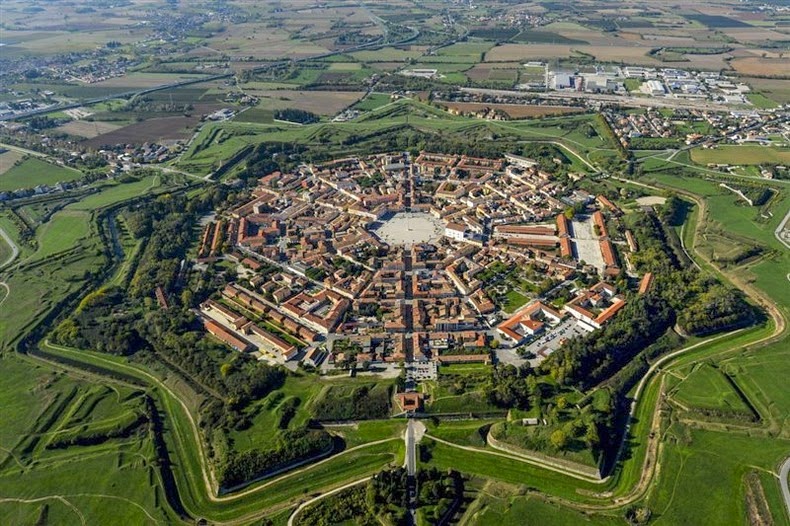The town of Palmanova is located in northeastern Italy, close to the border with Slovenia. While Palmanova’s origins can be traced back to thousands of years, the modern city started as a fortress built by the Venetian empire in the 16th and 17th centuries to prevent attacks from Austrian and Turkish forces. The town was founded in 1593, but its construction took about a century to complete. Built in a concentric star formation, the town consists of three rings which were built in stages. The entire town is enclosed in a circular area with a circumference of 7 km. This is surrounded by a moat, with nine arrow-shaped inter-connected ramparts that protruded out of the town so that the points could defend each other. Entrance to the town is allowed through three guarded gates.

Palmanova was supposed to be a utopia inhabited by self-sustaining merchants, craftsmen, and farmers. The builders imposed geometrical harmony into its design believing that beauty reinforces the wellness of a society. Each road and move was carefully calibrated and each part of the plan had a reason for being. Each person would have the same amount of responsibility and land, and each person had to serve a specific purpose. However, despite the pristine conditions and elegant layout of the new city, no one chose to move there. In desperation, the Venetian government pardoned a number of prisoners in 1622 and gave them property in Palmanova.
Although a fortress, Palmanova never saw a battle and despite its apparently impenetrable defense, Palmanova was captured twice – first by Napolean and then back by the Kingdom of Italy.
During the First World War Palmanova's strategic location made it a logical base for the Italian military, which set up hospitals, storage facilities and drilling grounds in the area. During the Second World War Palmanova was used again as a base for Italy's efforts against anti-fascist partisans who were operating in the region. The town became a National Monument in 1960.
Also see: Star-Shaped Fort Bourtange in Netherlands
The square, called Piazza Grande, is in the form of a perfect hexagon and is flanked by important buildings, including the cathedral, where there are a number of works of interest, and the Civic History Museum, containing arms, historical items and documents illustrating the history of the fortress town from its origins to the Second World War. Photo credit
Street-level view of Piazza Grande. Photo credit
One of the many radially symmetrical streets leading to Piazza Grande. Photo credit
















Looks like the inspiration for "Attack on Titan"
ReplyDelete